trebuie să fii logat
-
întoarce-teX
-
Componente
-
-
Category
-
Semiconductoare
- Diode
- tiristoare
- Module izolate electric
- Redresoare în punte
-
Tranzistoare
- tranzistoare GeneSiC
- Module MOSFET Mitsubishi SiC
- Module MOSFET STARPOWER SiC
- Module MOSFET ABB SiC
- Module IGBT de la MITSUBISHI
- Module de tranzistori MITSUBISHI
- module MITSUBISHI MOSFET
- Module de tranzistori ABB
- Module IGBT de la POWEREX
- Module IGBT - de la INFINEON (EUPEC)
- Elemente semiconductoare din carbură de siliciu
- Accesați subcategoria
- Șoferii
- Blocuri de putere
- Accesați subcategoria
- Traductoare de curent și tensiune LEM
-
Componente pasive (condensatori, rezistențe, siguranțe, filtre)
- Rezistoare
-
Siguranțe
- Siguranțe miniaturale pentru sisteme electronice din seria ABC și AGC
- Siguranțe tubulare cu acțiune rapidă
- Inserții întârziate cu caracteristici GL/GG și AM
- Legături sigure ultra-rapide
- Siguranțe standard britanice și americane cu acțiune rapidă
- Siguranțe cu acțiune rapidă standard european
- Siguranțe de tracțiune
- Siguranțe de înaltă tensiune
- Accesați subcategoria
-
Condensatoare
- Condensatoare pentru motoare
- Condensatoare electrolitice
- Condensatori Icel Film
- Condensatoare de putere
- Condensatoare pentru circuite DC
- Condensatoare de compensare a puterii
- Condensatoare de înaltă tensiune
- Condensatoare pentru încălzire prin inducție
- Condensatoare de impulsuri
- Condensatoare DC LINK
- Condensatoare pentru circuite AC/DC
- Accesați subcategoria
- Filtre anti-interferențe
- Supercondensatoare
-
Protecție la supratensiune
- Descărcătoare de supratensiune pentru aplicații RF
- Descărcătoare de supratensiune pentru sisteme de vedere
- Descărcătoare de supratensiune pentru linia de alimentare
- Descărcătoare de supratensiune cu LED
- Descărcătoare de supratensiune pentru fotovoltaice
- Descărcătoare de supratensiune pentru sisteme de cântărire
- Descărcătoare de supratensiune pentru fieldbus
- Accesați subcategoria
- Filtre de emisii revelatoare TEMPEST
- Accesați subcategoria
-
Relee și Contactoare
- Teoria releelor și contactoarelor
- Relee cu stare solidă trifazată CA
- Relee cu stare solidă DC
- Regulatoare, sisteme de control și accesorii
- Porniri ușoare și contactoare inversoare
- Relee electromecanice
- Contactoare
- Comutatoare rotative
-
Relee cu stare solidă CA monofazate
- Relee cu stare solidă CA monofazate Seria 1 | D2425 | D2450
- Relee semifazate CA monofazate, seria CWA și CWD
- Relee semifazate CA monofazate seriile CMRA și CMRD
- Relee cu stare solidă CA monofazate Seria PS
- Relee cu stare solidă AC seria duble și cvadruple D24 D, TD24 Q, H12D48 D
- Relee monofazate din seria GN
- Relee cu stare solidă CA monofazate Seria CKR
- Relee monofazate pentru șină DIN AC SERIA ERDA și ERAA
- Relee AC monofazate pentru curent de 150A
- Relee duble cu stare solidă integrate cu radiator pe șină DIN
- Accesați subcategoria
- Relee cu stare solidă imprimabile monofazate CA
- Relee de interfață
- Accesați subcategoria
- Miezuri și alte componente inductive
- Radiatoare, Varistoare, Protectie termica
- Fani
- Aer conditionat, Accesorii tablou, Racitoare
-
Baterii, încărcătoare, surse de alimentare tampon și convertoare
- Baterii, încărcătoare - descriere teoretică
- Baterii litiu-ion. Baterii personalizate. Sistem de management al bateriei (BMS)
- baterii
- Incarcatoare de baterii si accesorii
- UPS și surse de alimentare tampon
- Convertoare si accesorii pentru fotovoltaice
- Stocarea energiei
- Pile de combustibil cu hidrogen
- Celule litiu-ion
- Accesați subcategoria
-
Automatizare
- Elevatoare Spiralift
- Piese pentru drone Futaba
- Întrerupătoare de limită, Micro întrerupătoare
- Senzori, traductoare
- Pirometre
- Contoare, relee de timp, contoare de panou
- Echipament industrial de protectie
- Semnale luminoase și sonore
- Cameră termică
- Afișaje LED
- Butoane și întrerupătoare
- Accesați subcategoria
-
Cabluri, fire Litz, Conduite, Conexiuni flexibile
- Firele
- Presetupe și manșoane
- Chipurile
-
Cabluri pentru aplicatii speciale
- Cabluri de prelungire și compensare
- Cabluri de termocuplu
- Cabluri de conectare pentru senzori PT
- Cabluri cu mai multe fire de temperatură. -60°C până la +1400°C
- Cabluri de medie tensiune SILICOUL
- Cabluri de aprindere
- Cabluri de incalzire
- Cabluri cu un singur conductor temp. -60°C până la +450°C
- Fire de cale ferată
- Cabluri de încălzire în ex
- Cabluri pentru industria de apărare
- Accesați subcategoria
- tricouri
-
Impletituri
- Impletituri plate
- Impletituri rotunde
- Impletituri foarte flexibile - plate
- Impletituri foarte flexibile - rotunde
- Impletituri cilindrice de cupru
- Impletituri si capace cilindrice din cupru
- Curele flexibile de împământare
- Impletituri cilindrice din otel zincat si inoxidabil
- Impletituri de cupru izolate PVC - temperatura de pana la 85 de grade C
- Impletituri plate din aluminiu
- Kit de conectare - impletituri si tuburi
- Accesați subcategoria
- Echipament de tracțiune
- Capse de cablu
- Sine flexibile izolate
- Sine flexibile multistrat
- Sisteme de management al cablurilor
- Accesați subcategoria
- Vezi toate categoriile
-
Semiconductoare
-
-
- Furnizori
-
Aplicații
- Automatizare HVAC
- Automatizare industrială
- Băncile de energie
- Cercetare si masuratori de laborator
- Componente pentru zonele cu pericol de explozie (EX)
- Echipament industrial de protectie
- Echipamente pentru dulapuri de distributie si control
- Exploatare minieră, metalurgie și turnătorie
- Imprimare
- Încălzire prin inducție
- Inginerie energetică
- Mașini CNC
- Masini de sudura si sudori
- Mașini de uscare și prelucrare a lemnului
- Masini pentru termoformarea materialelor plastice
- Măsurarea și reglarea temperaturii
- Motoare si transformatoare
- Surse de alimentare (UPS) și sisteme redresoare
- Tracțiune cu tramvai și feroviar
- Unități DC și AC (invertoare)
-
Instalare
-
-
Inductori
-
-
Dispozitive de inducție
-
-
Serviciu
-
- Kontakt
- Zobacz wszystkie kategorie
Alternative energy sources

Renewable energy sources or alternative energy sources are natural resources, which usage does not cause shortages - they are not dangerous to the environment, regenerate quickly, and their extraction does not emit hazardous substances. Similarly, renewable energy is an electric or heat energy that is emission-free and not causing any shortages.
Non-renewable energy sources - i.e. mining resources e.g. coal, oil, natural gas. The name “non-renewable” can be however misleading, because there is a possibility to restore these materials, but the time of their recovery exceeds the speed of their exploitation. Additionally, their usage has a negative effect on the natural environment, people’s health and economic situation in the world.
Types and application of renewable energy sources
All renewable sources are a part of so-called green/clean energy - natural, usually easily accessed and cheap if we own a proper technology and a method of extraction. Using alternative energy sources can be beneficial not only for the environment, but also provides companies with lower costs of production and power supply, maintenance, and guarantees safety and a stable source of power for the future in the world, which inevitably leads to change from traditional energy sources, and the penalties for polluting the earth and breaking international ecology norms are becoming a common practice. Renewable energy sources are not only huge wind or solar farms, but also small and simple solutions for homes and production facilities, often single devices based on wireless operation.
Solar energy - photovoltaic plants
Solar energy is used in two ways - for producing energy and heat. Electric energy is acquired through the usage of solar collectors, which absorb sun energy, then in a form of heat transfer it to the installation, where it’s converted to the energy possible for use in practice. Heat energy however is acquired through a method called photovoltaics - by installing cells made of semiconductor material (mostly silicon), thanks to which they gain sun radiation energy and convert it into direct current.
Solar energy is used in production companies, daily-usage applications, industrial power plants and is also applied at homes - solar panels are possibly the most economical and cheap solution for houses and companies.
Principle of operation:
Solar micro-inverter - works based on the DSCs controller, which provides off-grid and on-grid inverter operation. It is integrated with a battery management system, with an inversion circuit and transmitters. Typical solar systems in homes include solar panels, solar controllers, batteries, DC-AC solar inverters. During the day panels collect solar energy, which is converted into electric/heat energy and powers up batteries to use gathered sources at night.
Wind power - wind energy plants - To acquire wind energy we have to use special wind turbines, which create wind farms and convert the wind movement power to electric energy. A Wind turbine is composed of 3 main elements: a tower, moving gondola and a rotor. Wind and solar energy in recent years became two of the most often used and fastest developing energy producing methods.
Hydropower - hydropower plants (using gravitation power of water e.g. drifts in rivers)
Hydropower plants acquire energy due to the usage of water flow power. Various systems of couplings, dams, turbines and streams generate kinetic energy from water flow and eventually convert it to electric power. Hydropower is also an energy of drifts and streams, based on using regular and natural changes in the level of oceans and seas.
Bioenergy/biomass - biofuel (e.g. derived from plants)
Renewable energy can also use substances derived from plants or animals, which go through a process of biodegradation and create so-called biomass. The Key element is the photosynthesis process and converting biomass in the process of solar energy burning to the ready to use energy. We distinguish a few types of biomass: solid (e.g. wood, plants), liquid (biofuel e.g. from canola) and gas (biogas).
Geothermal energy - geothermal plants using Earth’s heat energy
Geothermal - energy inside Earth - uses water and stone heat located under the surface. Acquiring geothermal energy is one of the most difficult methods, because sources are often located deep under the ground (even up to several kilometers deep). Renewable sources of this type are extracted with special bores, from which is collected hot water or steam, which then in a geothermal plant is converted to ready for use energy.
Why should you invest in renewable energy sources?
Committing to the development of renewable energy technologies is undoubtedly one of the best investment decisions, providing long-term benefits not only for the environment, but also businesses and manufacturing institutions.
Renewable energy sources guarantee:
Power supply stability - renewable sources do not lower the levels of natural resources and do not pose a threat of their shortage, also provide price stability and a variety of available energy sources.
- Power supply independence - no need to import resources from other countries.
- Low costs of power
- Low costs of acquiring materials - low power costs that are needed for production processes.
- Limiting CO2 emission
- Environment protection - limiting the level of emission of dangerous substances, environmental degradation, natural sources shortage.
- Clean and more efficient factories - safe, clean and healthy work conditions.
Climate changes – environmental, economic and social effects
Global warming and too much rainfall - climate warming causes hard to reverse effects such as glacier melting and increased level of oceans and seas. Recently, we discovered how critically high is the water pollution with waste, which is the cause of death of countless animals and ecosystems.
Due to the many-year polluting and ignoring global warming issue and pollution of water, there are already irreversible changes in the natural environment, for which it is already too late for us to be able to recover them.
High CO2 emission has already crossed all safety norms, and further damage can only be slowed down or limited throughout next decades of hard work on changing our current way of living. Thanks to the developing technologies and increasing awareness there is a chance for decreasing emission and saving our health and environment from global natural crisis.
Droughts - dry and cracked ground, winter without snow, extremely hot summer, rapid rainfalls, and then droughts - all of it leads to soil degradation and outbreak of hard to put out fires, as well as creation of smog, which for years has been one of the most frequent causes of illnesses and deaths.
Shortage of energy sources - the increase in the usage of fossil fuels leads to extraction from other sources in more and more hard to reach locations e.g. in the Arctic and leads to further degradation and human interference in the environment. It also contributes to the creation of conflicts - fuel sources are not located equally and due to the increasing shortage there's more competition and battles conflicts over available energy sources and ways to acquire them.
Non-renewable energy sources also create many social conflicts, such as numerous fatal accidents and injuries on drilling platforms or mines; oil leakage to seas and oceans; floods and higher levels of water and the necessity to leave homes e.g. Venice. They cause many health issues i.e. faster spread of infectious diseases (malaria, COVID-19); smog accumulation and breathing in the products of burning coal, dust, heavy metals, that are eventually a cause of cancers; more cases of asthma and other respiratory disorders. Due to the decreasing benefits of non-renewable sources there are also struggles on the job markets - job reduction, which could be replaced with new positions in sectors of renewable energy and new technologies.
Related products
Related posts
 Now available – DC/DC converters from PREMIUM
Now available – DC/DC converters from PREMIUM
 New release in DACPOL lighting for lathes – Kira covers
New release in DACPOL lighting for lathes – Kira covers

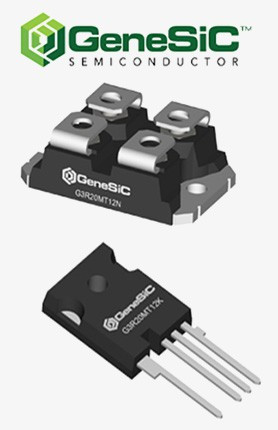
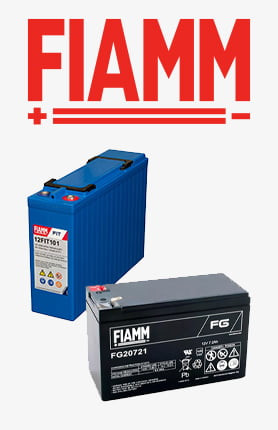
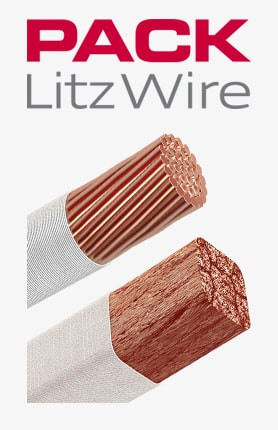


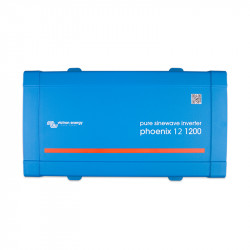
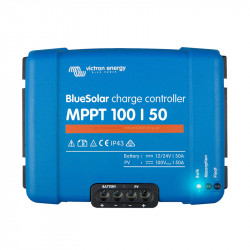
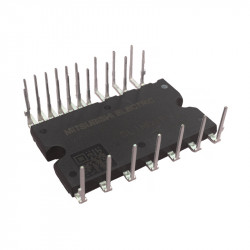
Leave a comment